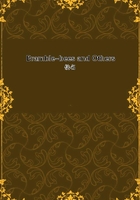
第61章 THE COTTON-BEES.(2)
To see the Cotton-bees' talents in action seems an undertaking fraught with innumerable difficulties: things happen at a depth inaccessible to the eye; and to persuade the insect to work in the open does not lie in our power. One resource remained and I did not fail to turn to it, though hitherto I have been wholly unsuccessful.
Three species, Anthidium diadema, A. manicatum and A. florentinum--the first-named in particular--show themselves quite ready to take up their abode in my reed-apparatus. All that I had to do was to replace the reeds by glass tubes, which would allow me to watch the work without disturbing the insect. This stratagem had answered perfectly with the Three-horned Osmia and Latreille's Osmia, whose little housekeeping-secrets I had learnt thanks to the transparent dwelling-house. Why should it not answer for its Cotton-bees and, in the same way, with the Leaf-cutters? I almost counted on success. Events betrayed my confidence. For four years I supplied my hives with glass tubes and not once did the Cotton-weavers or the Leaf-cutters condescend to take up their quarters in the crystal palaces. They always preferred the hovel provided by the reed. Shall I persuade them one day? I do not abandon all hope.
Meanwhile, let me describe the little that I saw. More or less stocked with cells, the reed is at last closed, right at the orifice, with a thick plug of cotton, usually coarser than the wadding of the honey-satchels. It is the equivalent of the Three-horned Osmia's barricade of mud, of the leaf-putty of Latreille's Osmia, of the Megachiles' barrier of leaves cut into disks. All these free tenants are careful to shut tight the door of the dwelling, of which they have often utilized only a portion. To watch the building of this barricade, which is almost external work, demands but a little patience in waiting for the favourable moment.
The Anthidium arrives at last, carrying the bale of cotton for the plugging. With her fore-legs she tears it apart and spreads it out;with her mandibles, which go in closed and come out open, she loosens the hard lumps of flock; with her forehead she presses each new layer upon the one below. And that is all. The insect flies off, returns the richer by another bale and repeats the performance until the cotton barrier reaches the level of the opening. We have here, remember, a rough task, in no way to be compared with the delicate manufacturer of the bags; nevertheless, it may perhaps tell us something of the general procedure of the finer work. The legs do the carding, the mandibles the dividing, the forehead the pressing; and the play of these implements produces the wonderful cushioned wallet.
That is the mechanism in the lump; but what of the artistry?
Let us leave the unknown for facts within the scope of observation. Iwill question the Diadem Anthidium in particular, a frequent inmate of my reeds. I open a reed-stump about two decimetres long by twelve millimetres in diameter. (About seven and three-quarter inches by half an inch.--Translator's Note.) The end is occupied by a column of cotton-wool comprising ten cells, without any demarcation between them on the outside, so that their whole forms a continuous cylinder.
Moreover, thanks to a close felting, the different compartments are soldered together, so much so that, when pulled by the end, the cotton edifice does not break into sections, but comes out all in one piece. One would take it for a single cylinder, whereas in reality the work is composed of a series of chambers, each of which has been constructed separately, independently of the one before, except perhaps at the base.
For this reason, short of ripping up the soft dwelling, still full of honey, it is impossible to ascertain the number of storeys; we must wait until the cocoons are woven. Then our fingers can tell the cells by counting the knots that resist pressure under the cover of wadding. This general structure is easily explained. A cotton bag is made, with the sheath of the reed as a mould. If this guiding sheath were lacking, the thimble shape would be obtained all the same, with no less elegance, as is proved by the Girdled Anthidium, who makes her nest in some hiding-place or other in the walls or the ground.
When the purse is finished, the provisions come and the egg, followed by the closing of the cell. We do not here find the geometrical lid of the Leaf-cutters, the pile of disks tight-set in the mouth of the jar. The bag is closed with a cotton sheet whose edges are soldered by a felting-process to the edges of the opening. The soldering is so well done that the honey-pouch and its cover form an indivisible whole. Immediately above it, the second cell is constructed, having its own base. At the beginning of this work, the insect takes care to join the two storeys by felting the ceiling of the first to the floor of the second. Thus continued to the end, the work, with its inner solderings, becomes an unbroken cylinder, in which the beauties of the separate wallets disappear from view. In very much the same fashion, but with less adhesion among the different cells, do the Leaf-cutters act when stacking their jars in a column without any external division into storeys.